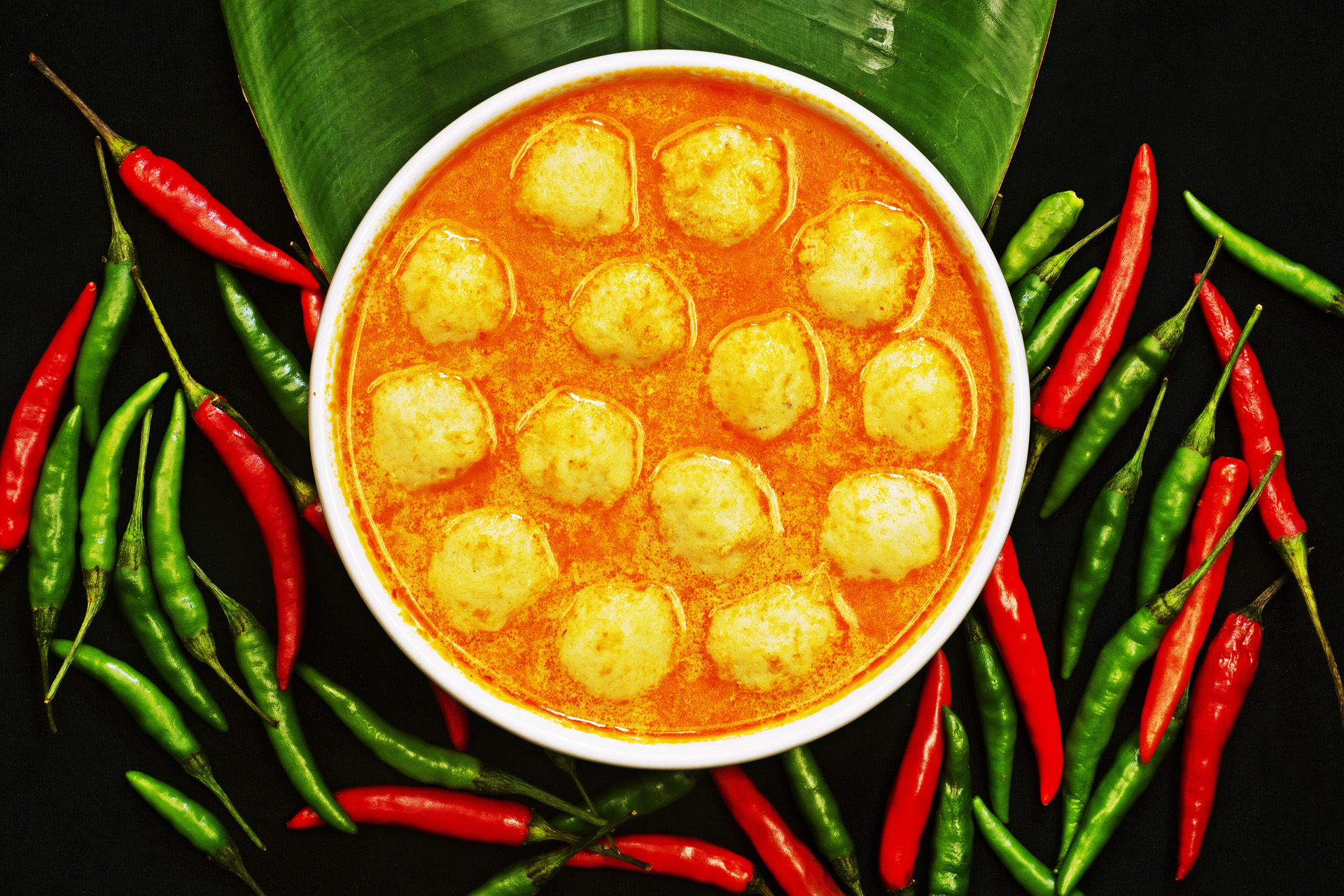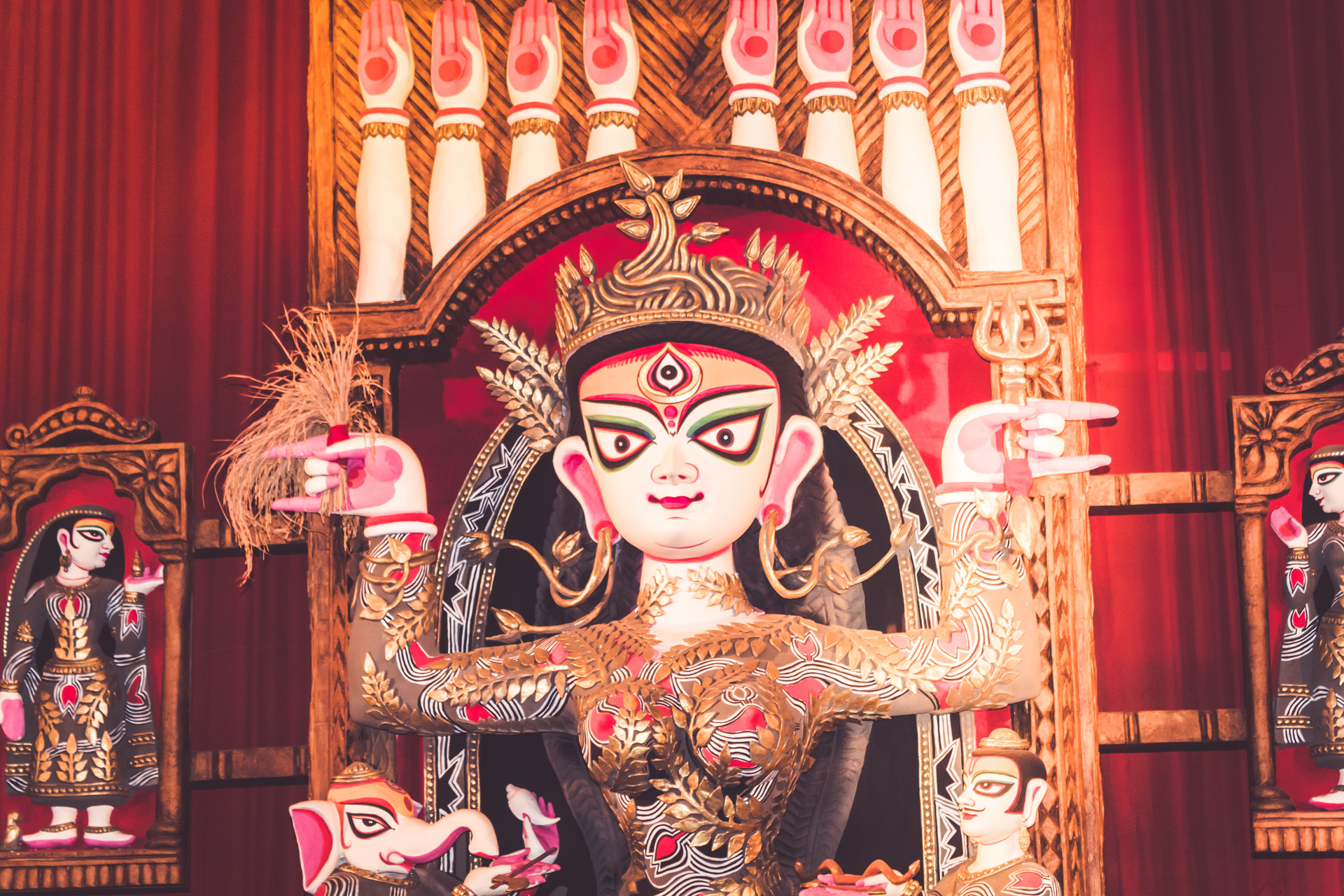The month of ashwin (Sept-Oct) marks the homecoming of Devi Durga where she, along with her four children, Lakshmi, Saraswati, Kartik, Ganesh and two friends, Jaya and Bijaya visits her natal home. It is that time of the year, therefore, that pronounces the arrival of Devi Durga to the homes and hearts of every Bengali. But Durga Puja stretches beyond this simple legend. It translates into an extravagance visible in every minute detail of life, spanning over a period of five days but crafting memories to last the next three sixty five days, at least.
One of the most dominating images of Durga Puja is the grandeur of its pandals (marquee) that are organized by local community blocks or paara to corporate houses and even celebrities. And it is this very pandal that becomes a site of jubilance and gaiety, coupled with religious supplication, of course. Growing up in Calcutta, (yes it will always be Calcutta for me) and later living in other cities, one feature of Bengali life that has etched a deep mark in my consciousness is the love for the festival, often articulated by the pandals.
Going by the chaotic beauty of pandals, it would not be unfair to assume that Durga Puja almost becomes a euphemism for over-indulgence, especially with respect to food. On one side stands the larger-than-life ten-armed goddess, with weapons, standing in formidable posture over the defeated demon mahishasur, flanked by her children and worshipped through chants, flowers and religious zeal; on the other end, stands a retinue of food-stalls selling all kinds of dishes under the sun. A cursory look at the diverse food-items is enough to make one believe that the world has shrunk into the food-stalls of pandals.
From kosha maangsho and luchi (spicy mutton and deep-fried flat-bread) to chicken lollipops and momos, (Tibetan steamed dumplings), the pandal becomes a global village which exemplifies not only a love for food but also a fascinating diversity in the palette. Foods representing the length and breadth of India to countries across the globe, share space with one another with each enjoying its loyal band of followers. So a kathi roll (an Indian wrap), a burger and biryani to a shwarama, falafel (Lebanese food) and the regular fish fry, attracts food lovers in equal proportions because the taste-buds seem to enjoy the goodness each food has to offer instead of discriminating based on race, ethnicity or religion.

At another level, the pandal becomes a ceremonious site of fusion of cultures. Just as sugar melts into milk to enhance its flavor, (borrowed from the popular Parsi story), the multitude of cultures blend to create a rich tapestry, spelling unique grace. Cutlet for instance, a popular Bengali snack has its roots in the Anglo-Indian tradition which over the years has merged with the commoner’s palette to be what it is today; a spicy piece of chicken/fish coated with breadcrumbs and deep-fried. It has a vegetarian variant as well. Or for that matter, the kathi roll; a dish introduced by the rulers of the Delhi Sultanate which was later adopted by the nawabs of Murshidabad around 18th century, under whose patronage the savoury wrap was reinvented in its current avatar.
It is possible to argue against the pandal culture by engaging in a critique of global economy promoted by consumerism where Western capitalism has made broad inroads into local cuisines. While such a discourse would be legitimate, the spirit of Durga Puja however, forces me to view it through a lens of hope and cheer. The ethos of this festival supersedes its religious ramifications. It rests on harmony and benevolence, moving beyond the good versus evil binary. It’s a congruence of cultures which imparts lessons of peaceful coexistence. The pandal therefore, is a classic site where tradition meets modernity, converting it into a boisterous global hub, carrying the recipe to herald a happier future for all.
And there could perhaps be no better way to capture this cultural concoction than through a dish which has travelled from a land of nostalgia to Bengal. So here it is, soft fish dumplings in tomato and onion gravy known traditionally as chitol machher muitha and comes straight from the kitchens of Faridpur, Bangladesh, to settle as a veritable part of Bengali cuisine.
For the dumplings, take 250 gms of minced chitol fish and mix it with 1 tsp each of ginger-garlic paste, ½ tsp of green chilli paste (optional), a dash of cumin powder and salt. With moist hands, mix the paste carefully and carve lemon sized dumplings. Put the dumplings in a pan of boiling water for 1-2 minutes and set aside to drain the excess water. Next, shallow fry the dumplings and dab it with paper towels to remove excess oil.
Meanwhile, for the gravy, heat oil (mustard oil preferably) in a pan and add whole garam masala, (cinnamon 1/2″, green cardamoms 2, cloves 2) and one bay leaf. When it starts to sizzle, add a paste of ginger and cumin seeds, (1/2” ginger, 1 tsp cumin), followed by a paste of two onions and one tomato and fry till the oil separates. Add the spices: 1 tsp red chilli powder, ¼ tsp turmeric powder, 2 tsp of ground coriander seeds and salt to taste. Gradually pour 2 cups of warm water and bring it to a boil. Finally, pour the dumplings carefully and let it simmer on low to medium heat for 10 minutes. For finish, add a pinch of garam masala and your muitha is ready to be served, preferably with plain rice. (Chitol can be replaced with sea bass and fried potato cubes could be added to the gravy).
So, without further adieu, gather all the ingredients, savour the richness of this festival and usher in hope by singing a joyous autumnal hymn…dugga dugga!
This article was first published in ourfrontcover.com

